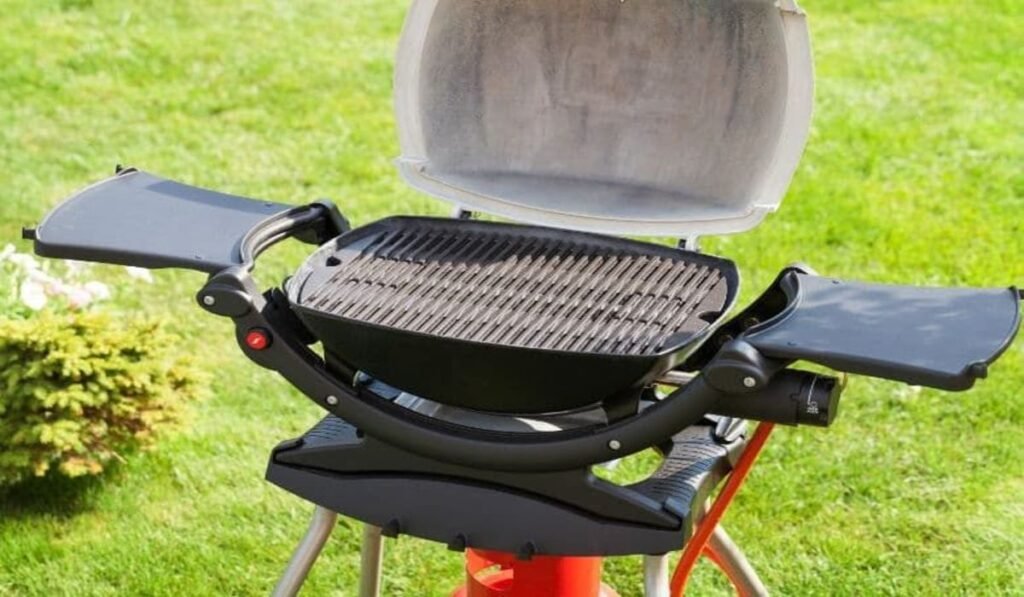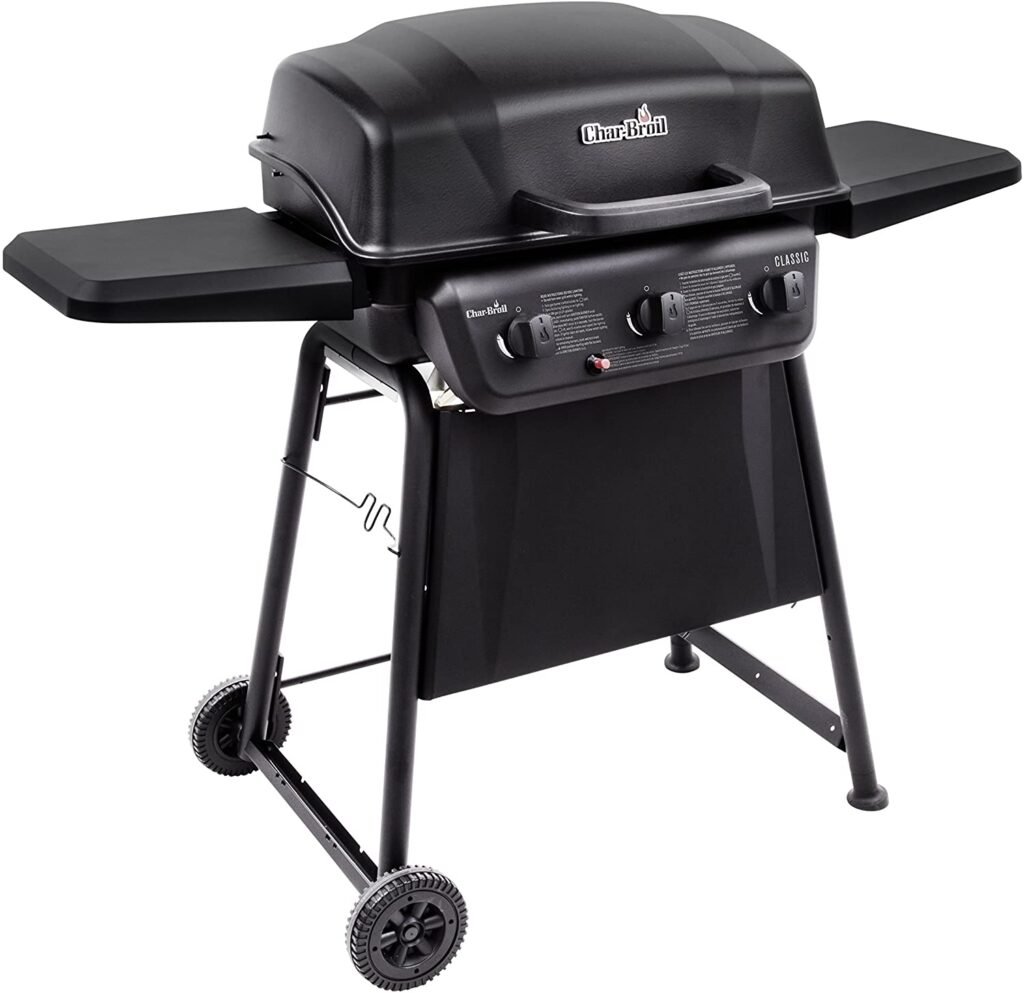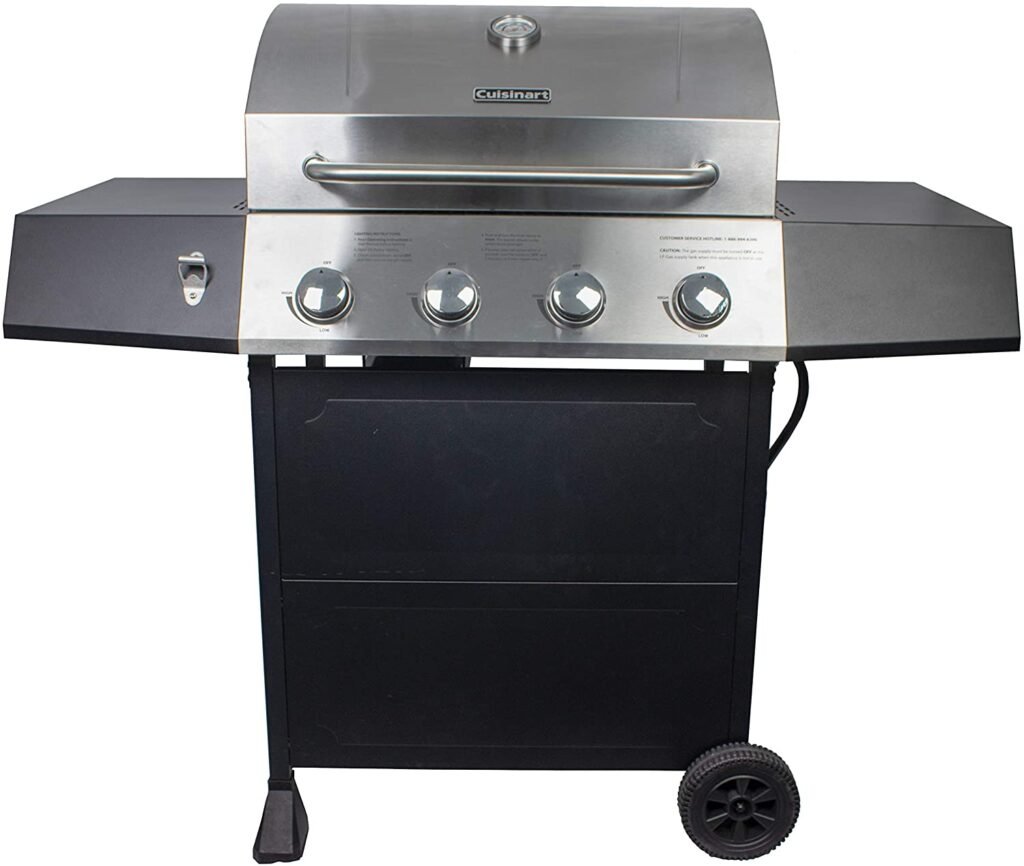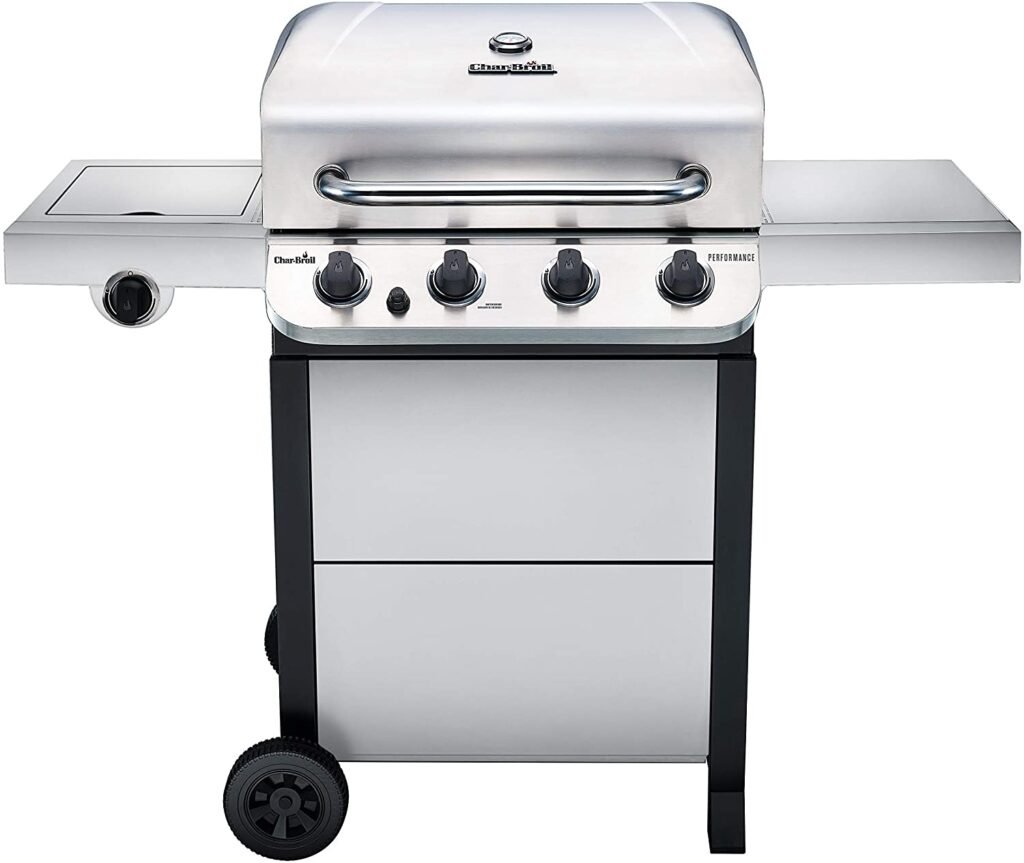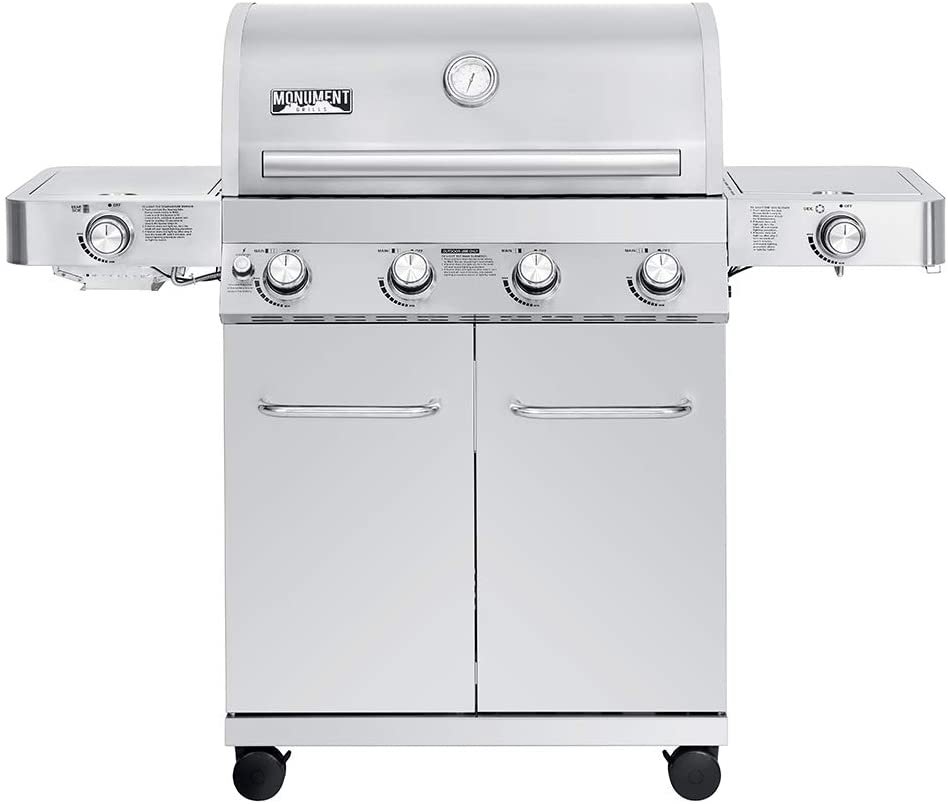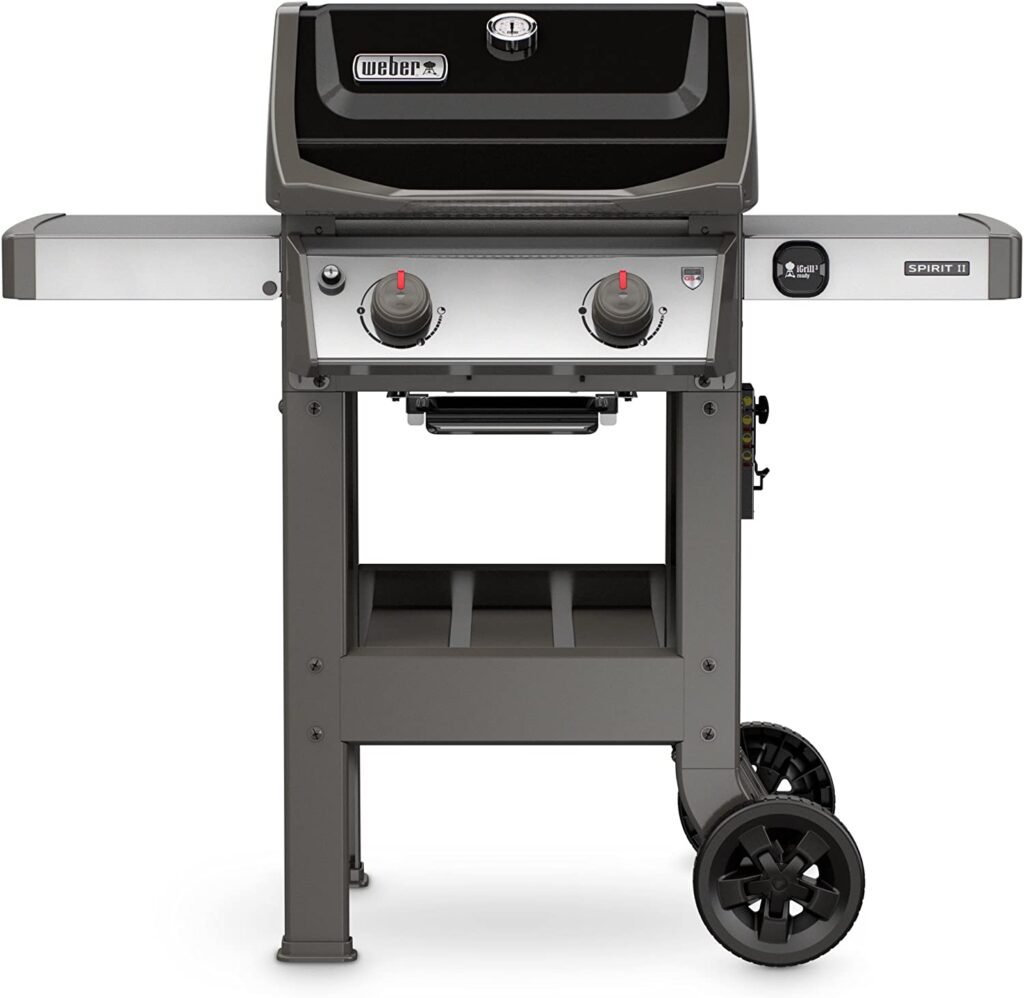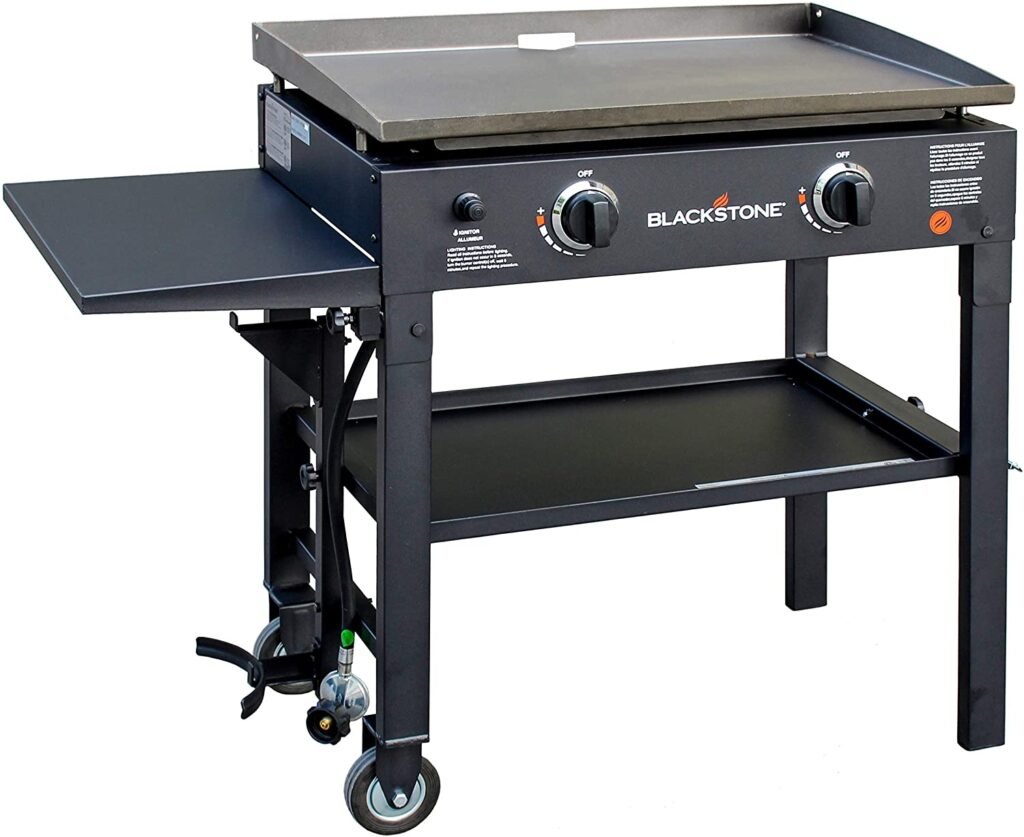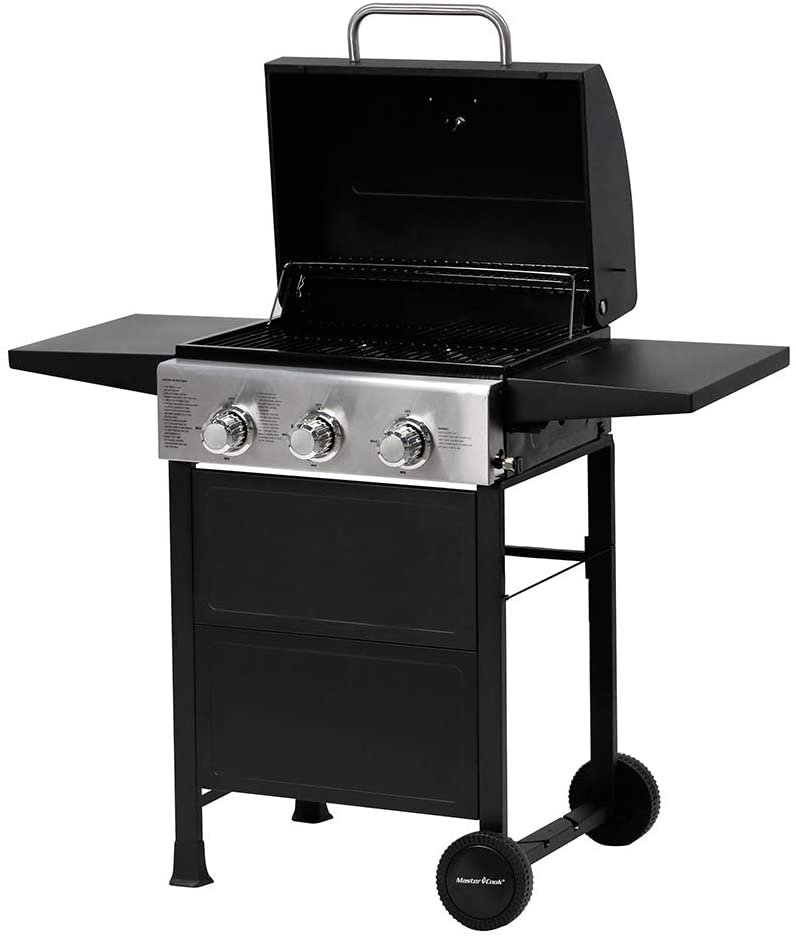Gas Type
Gas grills run on either natural gas or propane, which create virtually identical results and are often similarly priced despite minor differences in composition. It’s important to be completely confident about this decision before you purchase a grill — converting from one fuel type to another should be performed only by a licensed professional, and doing so can void the warranty from certain grill brands. Because both fuels cook similarly, your decision should come down to availability and convenience.
If you already have existing natural gas lines in your home, then a natural gas grill probably makes the most sense for you. Just like water or electricity, natural gas is continuously piped into your home by a utility company as long as you pay the bill. This highly convenient fuel type, which is most commonly associated with built-in configurations, gives grillers the confidence to cook as much as they want without worrying about running out of fuel.
Homeowners without natural gas lines should strongly consider using propane. Standard, 20-pound propane tanks can be purchased and exchanged at most hardware or grocery stores, and refilling them is as easy as visiting your local propane distributor. Though propane comes with the added responsibility of refilling fuel yourself, using these portable tanks makes your grill more mobile than what it would be when connected to natural gas with a quick disconnect hose.
Both fuels provide a clean-burning power source. Natural gas has the advantages of convenience and lower fuel costs and you won’t have to buy a tank, however, they’re limited in terms of positioning to an area in close proximity to the gas line.
Built-in Gas Grills
Built-in gas grills (which are also referred to as drop-ins, grill heads, or grill inserts) are placed into a BBQ island as part of a larger outdoor kitchen. They can often be purchased with full lines of matching outdoor kitchen equipment, allowing you to create a cohesive aesthetic in your backyard. Built-in grills make for a natural gathering place in your outdoor area, and can often add significant value to your home.
Freestanding Gas Grills
Rather than being built into a structure, freestanding gas grills are placed on a movable cart that usually has an enclosed storage area for fuel tanks and cooking accessories. These grills are more mobile than built-ins, meaning you can rearrange your outdoor setup with little hassle. Look for freestanding grills with a side burner so you can prepare side dishes or simmer your favorite sauce for basting.
Gas barbecues features
- Simple, push-button ignition provides an instant flame so you can start cooking in about 10 minutes
- Feature flavouriser bars above the burners, which heat up the same way as charcoal but can be regulated the same way as a cooker
- Easier to cook food more evenly, with less risk of burning
- Low maintenance, with minimal cleaning and no charcoal ash to dispose of
- On some models, multiple burners make it possible to cook at different temperatures – ideal if you’re cooking different foods
- Other cooking options include side burners (useful for sauces or vegetables) and warming racks that are great for garlic bread, and keeping batches of grilled food warm
Grill Size
Who said size doesn’t matter? The amount of cooking surface your gas grill offers is extremely important because it determines how much food you can prepare. Larger grills typically include more main burners (models in our selection have between 1 and 8), which in turn dictate what kinds of cooking techniques are available to you. The more burners you have, the more flexible you can be when it comes to multi-zone cooking. To find the right size, ask yourself how many people you normally grill for, the maximum number of people you’d grill for, and how often you’d grill for that many guests. Then see where your answers fall within our 4 size categories: Small, Medium, Large, or XL. Just remember, you can always turn off a burner or two, but you can never make your cooking surface larger.
HOW MANY ARE YOU COOKING FOR?
Every barbecue has a cooking area which is measured in square centimeters (cm²). As a rough guide:
- Up to 4 people: you’ll need a smaller cooking area (up to 1800cm²)
- Up to 6 people: a larger area of 2000cm² to 2500cm² is enough
- Up to 8 people: the largest gas barbecues (over 2500cm²) will be enough
Make sure you note what material the grill is made of. This could include ceramic, stainless steel, cast aluminum, or cast iron. Stainless steel is the preferred material of professionals since it is easy to clean and typically doesn’t rust. Taking care of your grill will extend its life and performance. Be sure to inquire, about the clean-up and maintenance procedures of the grill you are interested in purchasing.
ORKK TOP SUGGESTIONS
